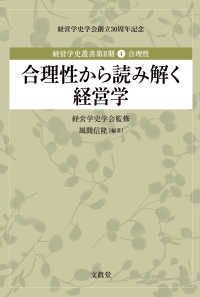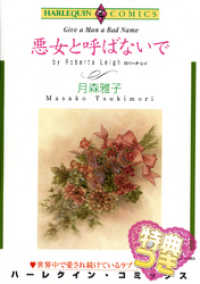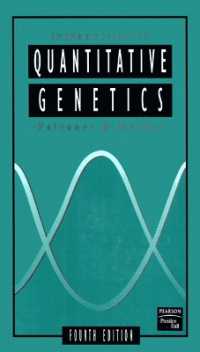基本説明
Contents: Mechanoreceptor Biology; Developmental Biology of the Ear; Genes and Deafness; Gene-based Therapy for Sensorineural Hearing Loss.
Full Description
Dr. Howard House, founder of the House Ear Institute and House Ear Clinic often uses the analogy of planting a seed when referring to establishing the House Ear Institute in 1946. Two grateful patients of Dr. House put forth the idea that his knowledge and innovative skills could be used to expand the understanding of hearing impairment and its treatment. Those two early patients provided the "seed money" to begin the Institute. Since that time, the growth has been phenomenal from a one-man laboratory to a multidisciplinary facility boasting over 175 scien tists, physicians, and support staff, all dedicated to the advancement of otologic research and education. Six years ago after a half-century of remarkable success with prosthetic and device research, the Institute began cultivating a new field of endeavor-cell and molecular biology. Don Nielsen, then the Institute's Executive Vice President for Research and Scientific Director, began exploring the potential for hair cell regen eration and presented his ideas to the Board of Trustees. For a period of six months, we did a lot of fact finding to assess what role the Institute might take in this excit ing new field.
Contents
I. Mechanoreceptor Biology.- 1. Kinociliary Mechanoreceptors in the Equilibrium Receptor Organs of Cephalopods.- 2. Stereocilia Based Mechanoreceptors of Sea Anemones.- 3. Plasma Membrane Ca2+-ATPase and Hair-Cell Function.- 4. Molecular Determinants of Hair Cell Phenotypic Heterogeneity—Differential Expression of K Channel Genes.- 5. Structural Basis of Outer Hair Cell Motility or Where's the Motor?.- II. Developmental Biology of the Ear.- 6. Induction of Ectodermal Placodes.- 7. Compartments and Boundaries in the Developing Inner Ear.- 8. Role of the POU-domain Transcription Factor Brn-3.1 in Hair Cell Development.- III. Genes and Deafness.- 9. Genetic Linkage Studies of Hereditary Hearing Loss.- 10. Mitochondrial Mutations and Hearing Loss.- 11. Loss and Regeneration of Cochlear Hair Cell Innervation following Sound and Drug Damage.- 12. Mechanism and Prevention of Aminoglycoside-Induced Hearing Loss.- 13. Neurotrophic Signaling by Membrane Electrical Activity in Spiral Ganglion Neurons.- 14. Protection of Cochlear Hair Cells from Gentamicin Ototoxicity and Mechanisms of Mammalian Hair Cell RegenerationIn Vitro.- 15. Protection and Regeneration of Vestibular Hair Cells—The Role of Neurotrophins after Gentamicin Ototoxicity.- IV. Gene-Based Therapy for Sensorineural Hearing Loss.- 16. Inner Ear Gene Therapy.- 17. Adeno-Associated Virus Mediated Gene Transfer in the Peripheral Auditory System.- 18.Herpes SimplexViral Vector Gene-Based Therapy to Prevent Loss of Auditory Sensory Cells from Stress-Induced Apoptosis.- Contributors list.








